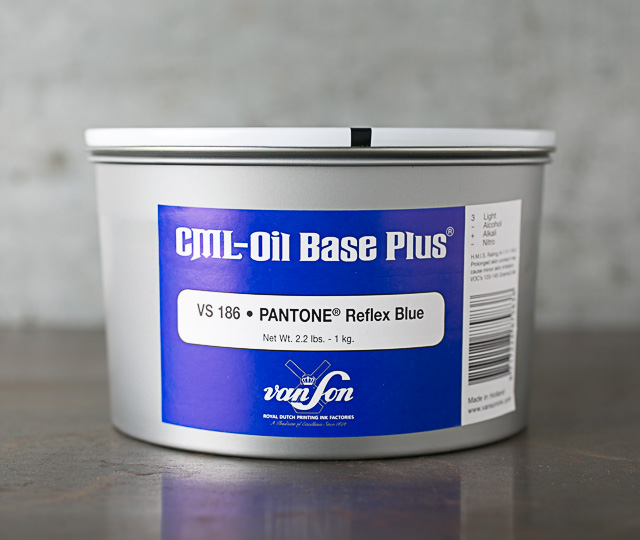
How to choose the right letterpress ink
We can all admire a nice solid blind deboss, right? But for the most part, we letterpress printers use actual ink when we print, making correct inking and ink selection so important. Our inks use the Pantone Matching System so that you know what the color will look like when printed.
- The Pantone Matching System for specifying ink
- Inks are not (usually) opaque
- Rubber-base ink versus Oil-base ink
- FAQs
The Pantone Matching System for specifying ink
Before you order ink, you probably want to know what it will look like when printed. In addition, you may want guidance in how to mix the various Pantone base colors together to get custom colors. Our Pantone Formula Guides help with both of these needs, and are organized by the type of ink used.
If you have a particular Pantone number in mind and don’t want to mix it yourself, we can supply custom rubber-base mixes and custom oil-base mixes as well.
Inks are not (usually) opaque
Almost all letterpress inks are translucent. In fact, assume your ink is translucent unless the label reads “black,” “opaque white)”, or “metallic”. Translucent inks mean you can overprint, printing one color over another to create a third color. It also means on large inked areas, you’ll see a little paper show-through. Even with opaque while (and to some degree metallic inks) you should expect to see a little bit of the paper showing through.
Rubber-base ink versus Oil-base ink
Here are the pros and cons of the two major letterpress inks, rubber based and oil based.
rubber based ink
break down of components (varies depending on color)
- 20-30% vegetable oil (including soy and linseed)
- 12-35% petroleum
- 15-25% pigment
- 20-40% synthetic resins
pros: strong general ink (it’s what we use in our shop!); matte finish; slow drying so you can leave it on the press for several hours or overnight; will not skin in the can; ideal for matte papers; colors are strong and vibrant.
cons: not ideal for metallic or coated papers (takes longer to dry); large solids with heavy ink coverage can take days or weeks to dry; slow drying of inks when overprinting (layering multiple inks on top of each other); colors may not be as loud or bright as other oil-based inks.
notes: don’t mix rubber-base inks together with oil based inks (note that metallics are always oil-based).
the reason Boxcar Press chose Van Son rubber-based ink for their print shop: it makes our printing process more flexible, since we’re able to keep a press open for a few hours if necessary while we do other things. Colors are consistent. This ink is the standard in the letterpress industry because it’s thick, consistent, and slow to dry. The only time we use oil-based inks are when we’re printing metallics or fluorescents, because these only come as oil-based.
Oil-base ink
break down of components (varies depending on color)
- 20-30% vegetable oil (includes soy and linseed)
- 15-30% petroleum
- 30-50% synthetic resin
- 15-25% pigment
- 1-2% dryer
pros: glossier ink (if that’s what you’re looking for); sets quickly so works well especially with coated papers; basic colors can be mixed with metallics for more ink options; ink additives such as high gloss or varnishes are better suited for oil based inks; colors are brighter than rubber-based; metallic inks are oil-based (but lose their shine on uncoated papers).
cons: should not leave ink on press for an hour or overnight or you will have a royal battle to clean off your rollers; skins in the can (use Van Son anti-skinning spray or wax paper to avoid skinning) so you may waste ink.





